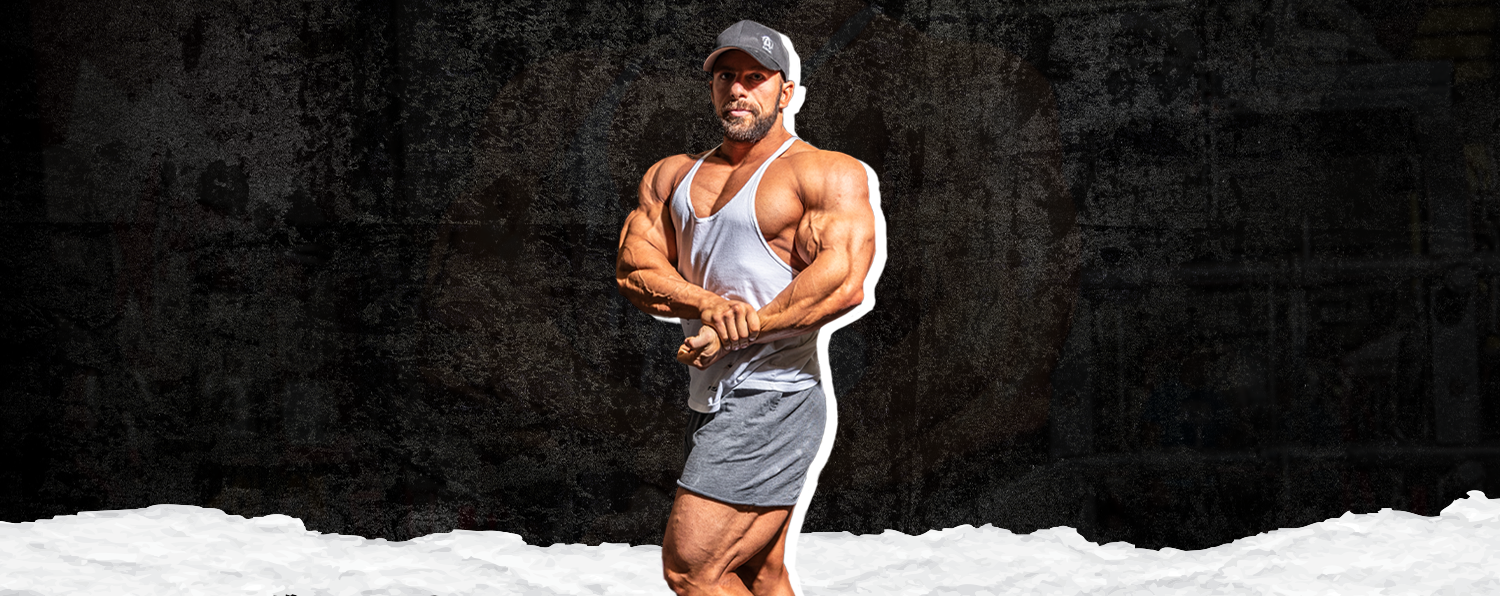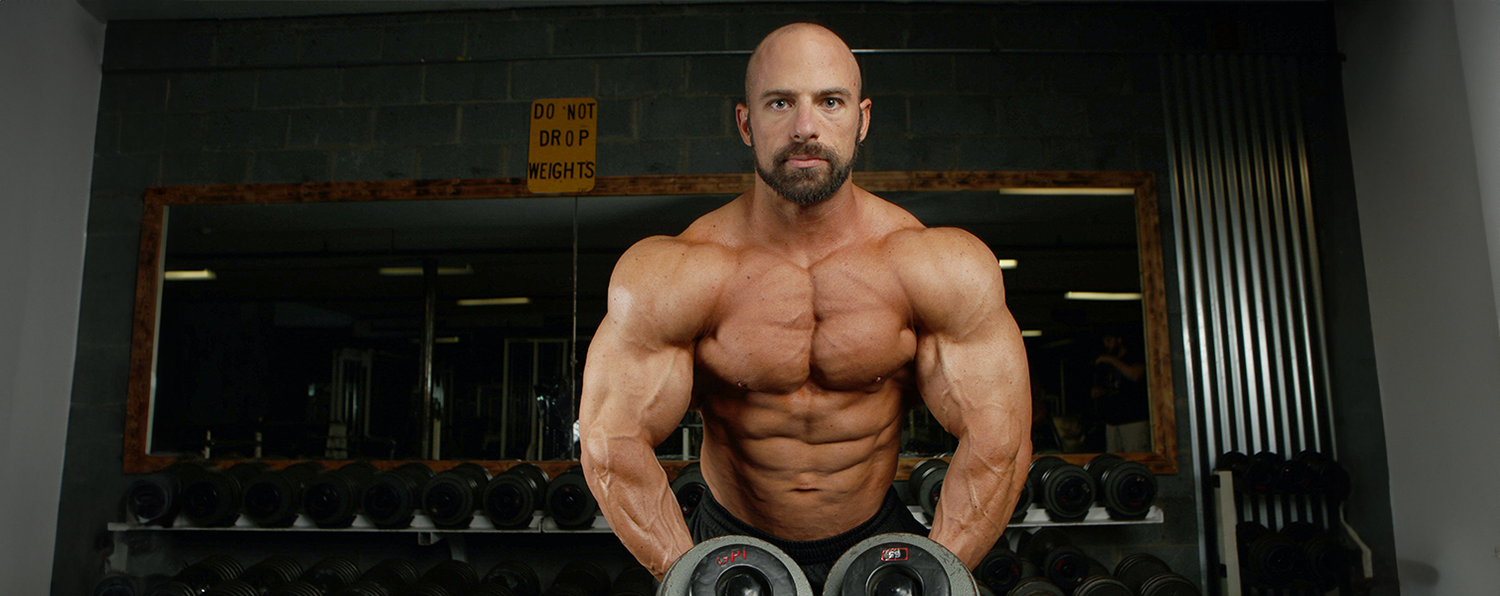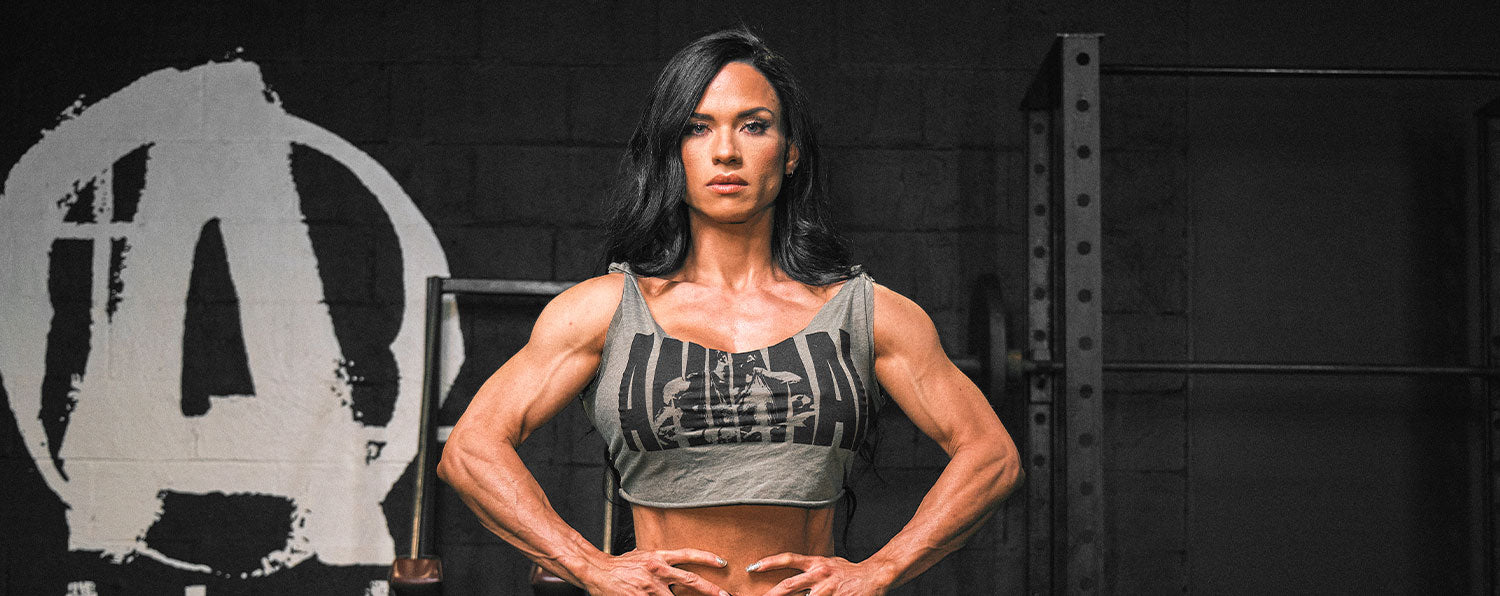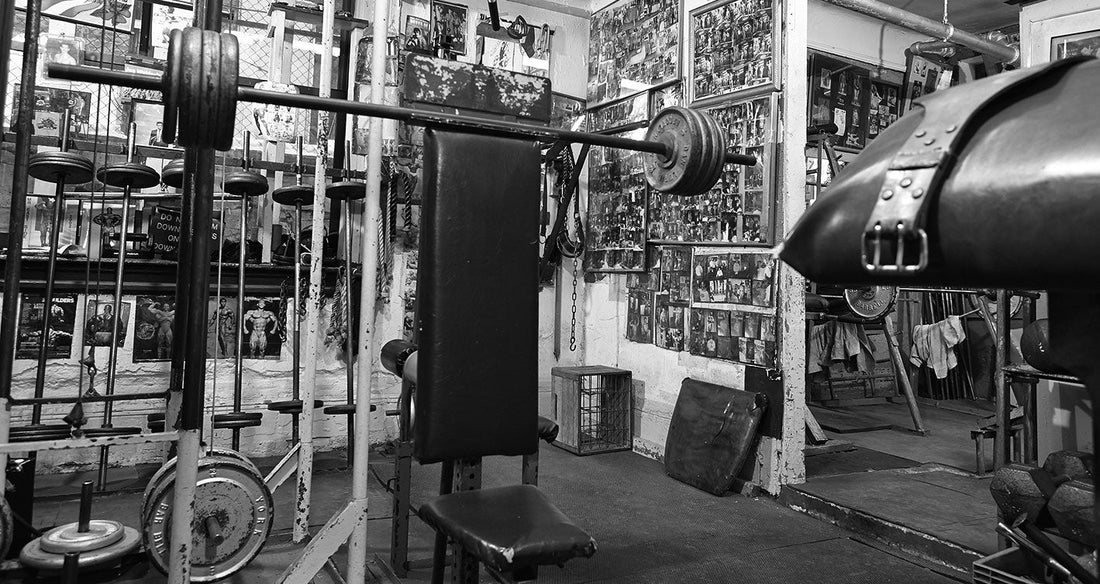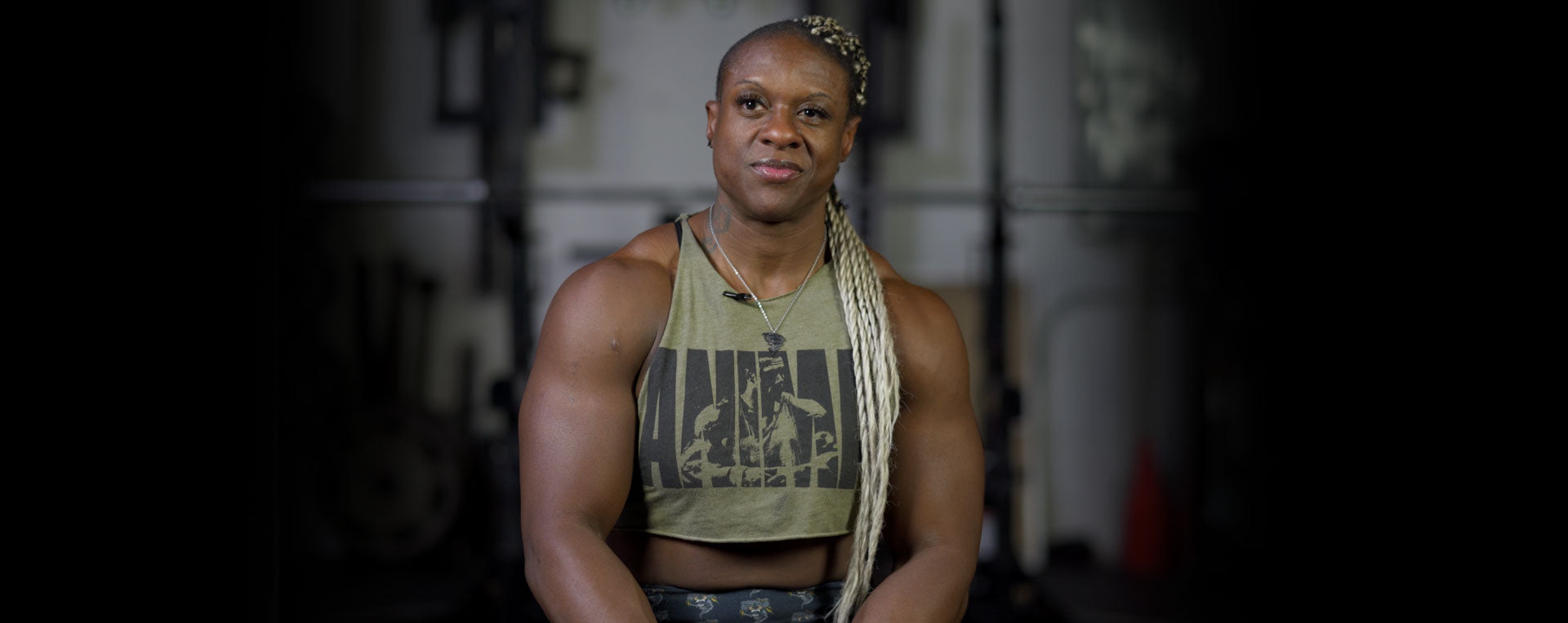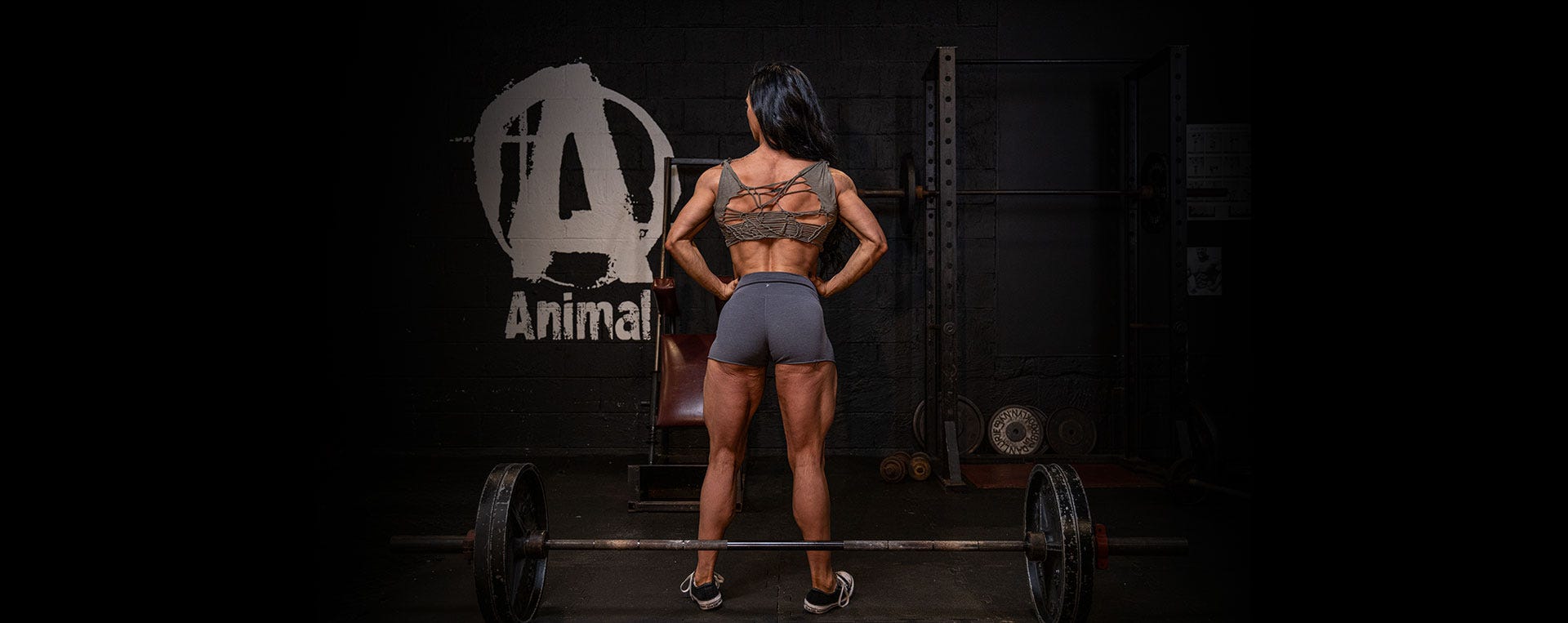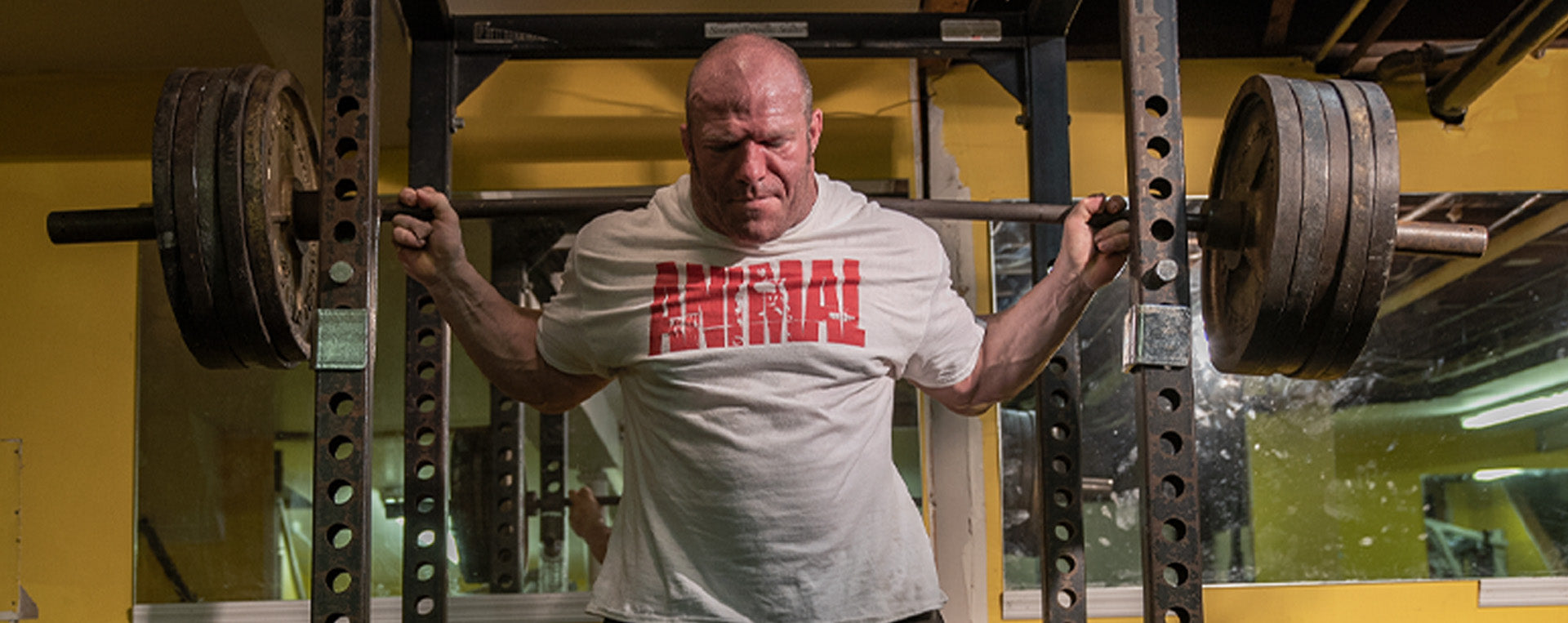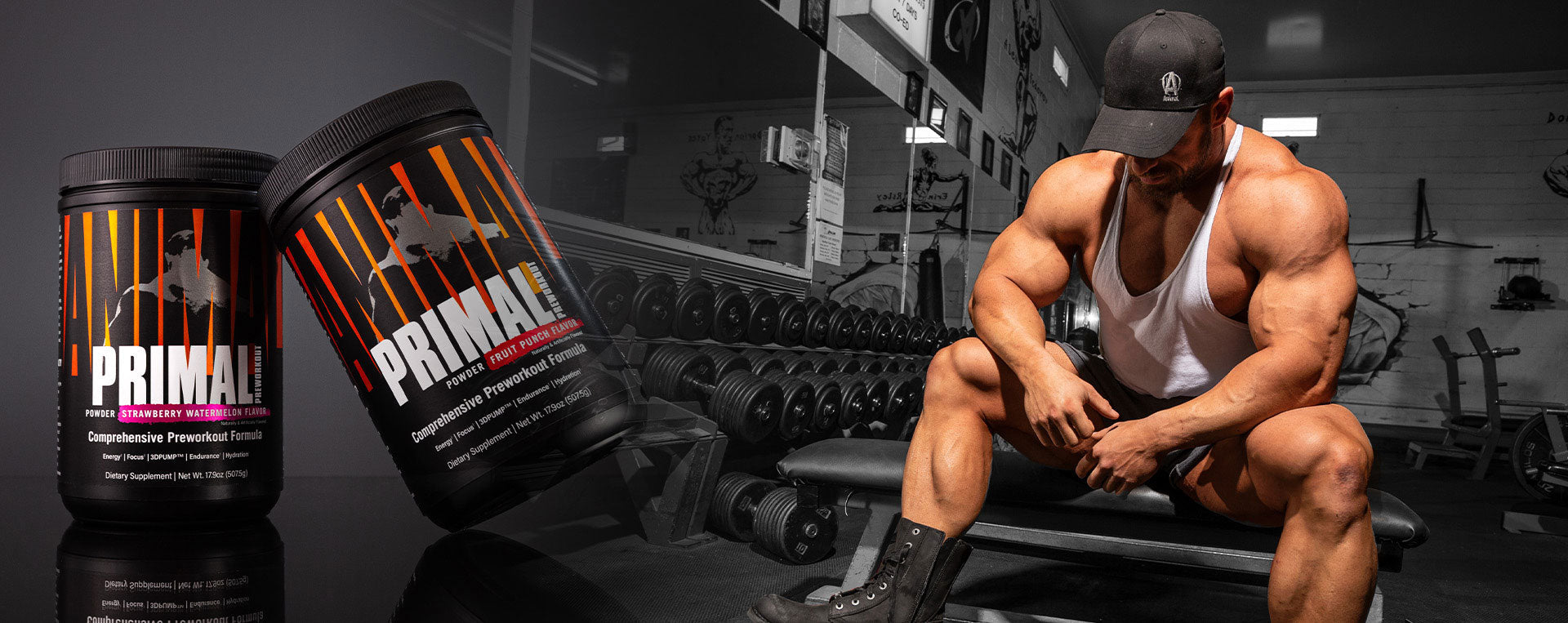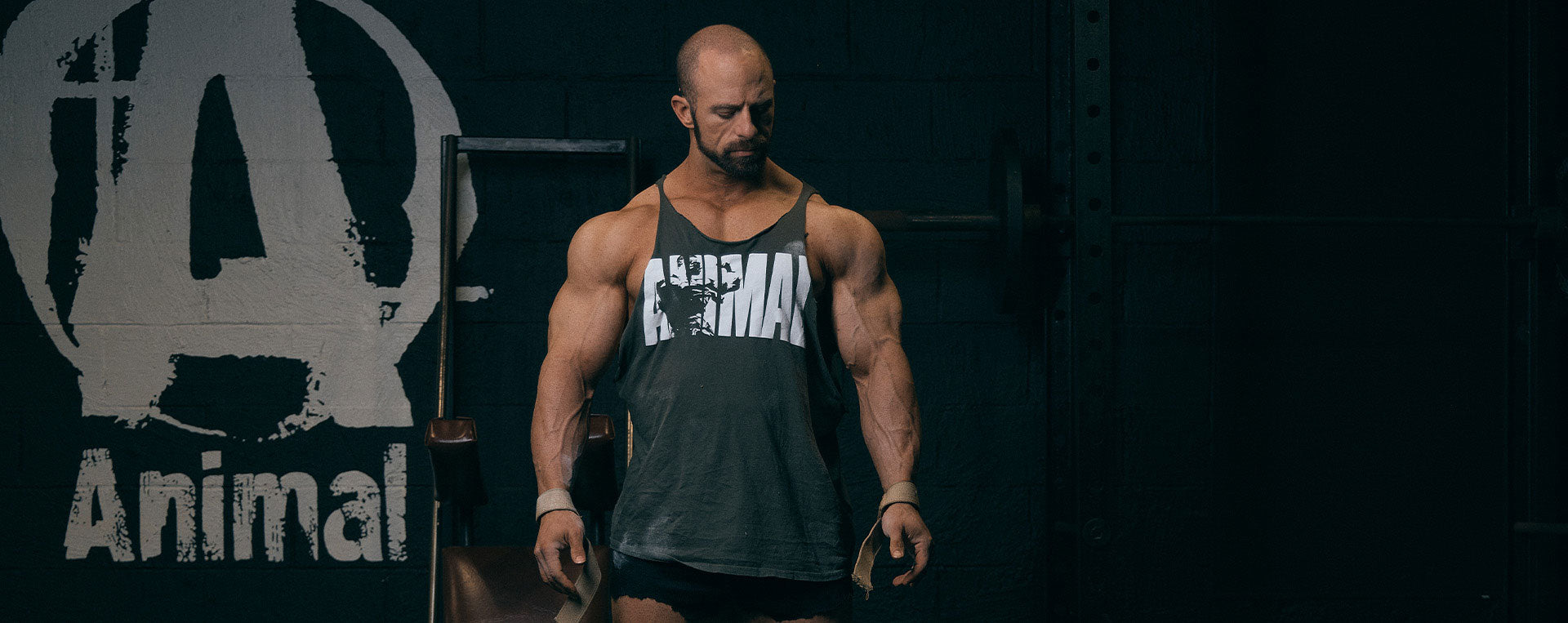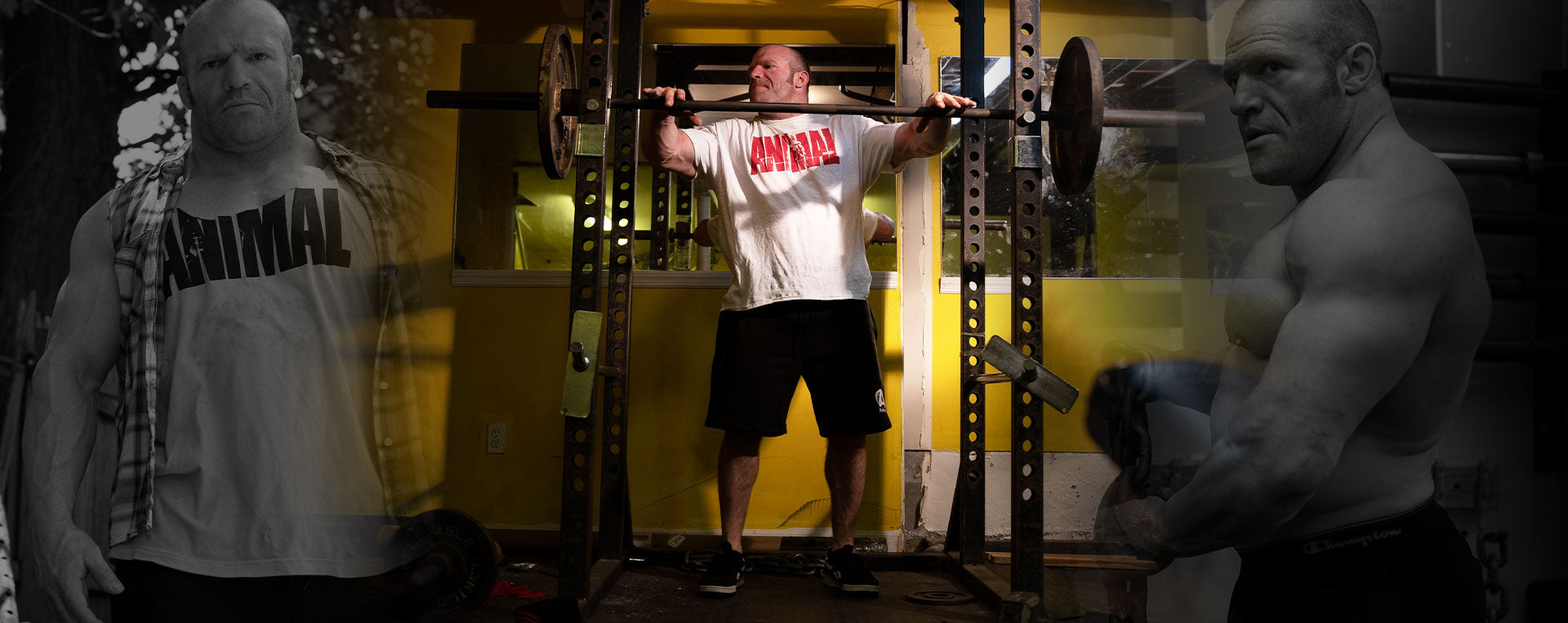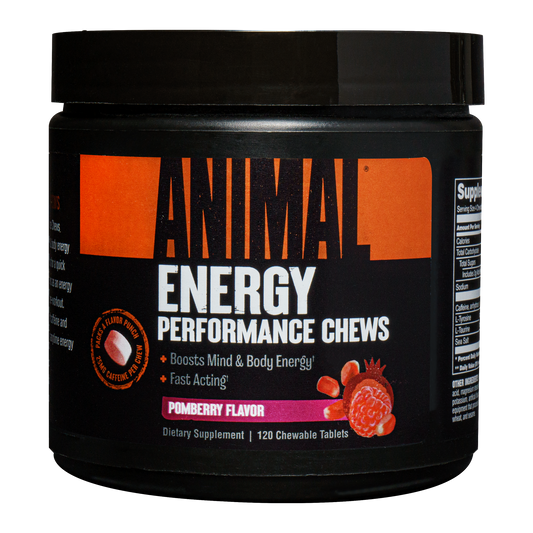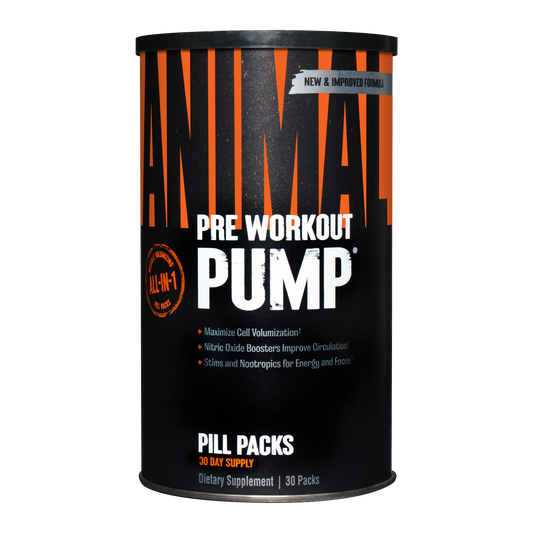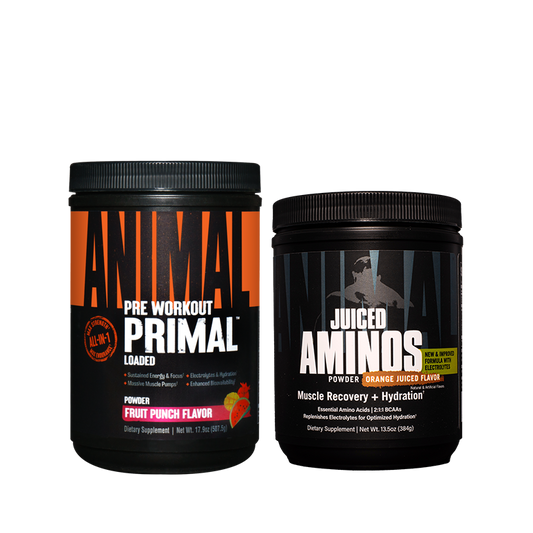Some people assume that lifting weights isn’t that difficult. They follow the “just do it” method of lifting and choose exercises without much thought. As long as you can move the weight, it's all good. I disagree. You've got to have some brains to go along with all of that muscle because we've all seen people who spend years in the gym but never make any progress. When it comes to making gains and progress in your shoulder development, you need to have a plan. The following are some principles I’ve followed throughout the years that have helped me.
I like to start most of my shoulder sessions with an overhead press. The time-tested approach is to start with compound movements first in your workout when your energy levels are highest. Compound movements will engage the greatest degree of muscle mass because two or more sets of joints are working simultaneously. Overhead presses are the most common shoulder compound exercise, engaging all three deltoid heads, as well as the triceps and other assisting muscle groups. It is crucial to choose the right move and the right weight. I like to go heavy with a resistance that causes muscle failure at about 6-8 reps. This is the lower end of the hypertrophy rep range, which goes as high as 12 reps.
While the pressing motion is the same whether you're seated or standing, there's an important distinction between the two types of moves. When standing, you're better able to generate a bit of thrust through your hips and knees. This kind of movement, called a standing military press, typically allows you to use more weight or do more reps than sitting allows. You will also be able to engage your core while doing a free weight standing press. Seated presses are considered slightly better for isolating your shoulders because it's far more difficult to generate momentum through your lower body. You will have to sacrifice some weight, some reps, or both as a result. Bottom line: each type of movement will help pack on the size to your shoulders. Make sure to mix up your routines and incorporate each type of press.
Free-weight overhead presses—those with dumbbells or a barbell—are more difficult to control than machine-based overhead pressing movements (smith machine or a hammer strength). Free weights will increase stabilizer activity at the expense of using heavier weight, reps, or both, but that is very important in shoulder development. You want to do harder exercises early in your workout before fatigue sets in; doing your overhead presses with free weights early in your workout is the best way to start. This way you can focus all your effort into pushing, not balancing, the weight. Save the machine version for later when fatigue makes balancing weights over your head difficult.
Overhead presses aren't the only kind of compound movement for the shoulders. Upright rows are another great option. Taking a moderate-width grip on the bar so that your upper arms go directly out to your sides makes this a good middle-delt exercise. As with lateral raises, there's a bit of shrugging that goes on when you do an upright row, which works the upper traps. Upright rows can be done after overhead presses or later in your workout as a burnout. Sometimes I like to superset an upright row with a front raise at the end of my workouts to really fry my delts.
When you raise your extended arms directly in front of your body, you focus on your front delts. This can be done standing or seated, and with one arm at a time or both. You can also use a variety of equipment, including a barbell, dumbbells, cables, or a machine. The front delts also work while performing overhead presses for shoulders (and presses for chest, especially incline movements).
Raising your extended arms directly out to your sides targets the middle delts. The movement is done in the lateral plane, which is why these exercises are called lateral-raise movements. Like front raises, lateral raises can be done seated or standing, one arm at a time or both. Typically it's best done with dumbbells, cables, or a machine. Your upper arm extends directly out to your side as you do it, which is the same motion it undergoes when doing behind-the-neck overhead presses. Both of these movements, therefore, strongly focus on the middle delts.
When you bend over and bring your extended arms from a position down below your body out to your sides, you hit your rear delts. Whether you're doing the movement standing (in the bent-over position), seated, or even on a machine facing forward (pec deck), the movement is all the same. One benefit when doing the reverse pec deck machine is that it locks your arms in a slightly bent position for the duration of the set. When doing standing rear cable laterals, be careful not to fully lock the arms and trigger more tricep movement instead of your rear delts.
Many people will add in shrugs onto the end of their shoulder workout, and for good reason: the upper trapezius gets a heavy dose of work on overhead-pressing and lateral-raise movements. Thus, for most people, completing the work by adding in shrugs seems like an obvious place to work the upper traps. It should be noted that the middle and lower portions of the traps don't get the same workload, and those areas are better trained on back day.
These are just a few tips I have learned over the years and have implemented into my training. Variety is best when trying to add size, but make sure you know what areas need more work and what exercises will help. As I mentioned earlier, you need a plan in order to make progress and gains. Try not to go into the gym without one.
I like to start most of my shoulder sessions with an overhead press. The time-tested approach is to start with compound movements first in your workout when your energy levels are highest. Compound movements will engage the greatest degree of muscle mass because two or more sets of joints are working simultaneously. Overhead presses are the most common shoulder compound exercise, engaging all three deltoid heads, as well as the triceps and other assisting muscle groups. It is crucial to choose the right move and the right weight. I like to go heavy with a resistance that causes muscle failure at about 6-8 reps. This is the lower end of the hypertrophy rep range, which goes as high as 12 reps.
While the pressing motion is the same whether you're seated or standing, there's an important distinction between the two types of moves. When standing, you're better able to generate a bit of thrust through your hips and knees. This kind of movement, called a standing military press, typically allows you to use more weight or do more reps than sitting allows. You will also be able to engage your core while doing a free weight standing press. Seated presses are considered slightly better for isolating your shoulders because it's far more difficult to generate momentum through your lower body. You will have to sacrifice some weight, some reps, or both as a result. Bottom line: each type of movement will help pack on the size to your shoulders. Make sure to mix up your routines and incorporate each type of press.
Free-weight overhead presses—those with dumbbells or a barbell—are more difficult to control than machine-based overhead pressing movements (smith machine or a hammer strength). Free weights will increase stabilizer activity at the expense of using heavier weight, reps, or both, but that is very important in shoulder development. You want to do harder exercises early in your workout before fatigue sets in; doing your overhead presses with free weights early in your workout is the best way to start. This way you can focus all your effort into pushing, not balancing, the weight. Save the machine version for later when fatigue makes balancing weights over your head difficult.
Overhead presses aren't the only kind of compound movement for the shoulders. Upright rows are another great option. Taking a moderate-width grip on the bar so that your upper arms go directly out to your sides makes this a good middle-delt exercise. As with lateral raises, there's a bit of shrugging that goes on when you do an upright row, which works the upper traps. Upright rows can be done after overhead presses or later in your workout as a burnout. Sometimes I like to superset an upright row with a front raise at the end of my workouts to really fry my delts.
When you raise your extended arms directly in front of your body, you focus on your front delts. This can be done standing or seated, and with one arm at a time or both. You can also use a variety of equipment, including a barbell, dumbbells, cables, or a machine. The front delts also work while performing overhead presses for shoulders (and presses for chest, especially incline movements).
Raising your extended arms directly out to your sides targets the middle delts. The movement is done in the lateral plane, which is why these exercises are called lateral-raise movements. Like front raises, lateral raises can be done seated or standing, one arm at a time or both. Typically it's best done with dumbbells, cables, or a machine. Your upper arm extends directly out to your side as you do it, which is the same motion it undergoes when doing behind-the-neck overhead presses. Both of these movements, therefore, strongly focus on the middle delts.
When you bend over and bring your extended arms from a position down below your body out to your sides, you hit your rear delts. Whether you're doing the movement standing (in the bent-over position), seated, or even on a machine facing forward (pec deck), the movement is all the same. One benefit when doing the reverse pec deck machine is that it locks your arms in a slightly bent position for the duration of the set. When doing standing rear cable laterals, be careful not to fully lock the arms and trigger more tricep movement instead of your rear delts.
Many people will add in shrugs onto the end of their shoulder workout, and for good reason: the upper trapezius gets a heavy dose of work on overhead-pressing and lateral-raise movements. Thus, for most people, completing the work by adding in shrugs seems like an obvious place to work the upper traps. It should be noted that the middle and lower portions of the traps don't get the same workload, and those areas are better trained on back day.
These are just a few tips I have learned over the years and have implemented into my training. Variety is best when trying to add size, but make sure you know what areas need more work and what exercises will help. As I mentioned earlier, you need a plan in order to make progress and gains. Try not to go into the gym without one.


